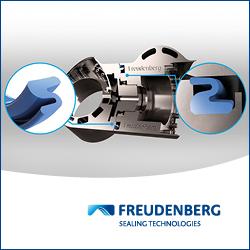Response to New York Times article - As Robotics Advances, Worries of Killer Robots Rise - by John Markoff and Claire Cain Miller
RIA Responds to New York Times article - As Robotics Advances, Worries of Killer Robots Rise - by John Markoff and Claire Cain Miller
The Robotic Industries Association (RIA) read with great interest the aforementioned article written by Mr. Markoff and Ms. Miller and takes exception to several of the points and conclusions made in the article.
RIA first published its industrial robot safety standard in 1986, in response to increasing acceptance of robotic technologies in industrial applications, and has been an active advocate in promoting industrial robot safety ever since. While even one accidental death is one too many, the robotics industry has been very successful in implementing standards and practices designed to safely deploy robots in factories and businesses throughout the world. Because of excellent global standards, there are more than 1.5 million robots now safely operating in factories worldwide.
With regard to "cage free" robots, RIA is currently leading international standards development efforts on the safe deployment on collaborative robot operations. The standards identify strict conditions and criteria that must be met in order for such robots to work without external safeguards, such as fences or light curtains. If the criteria cannot be met, the fallback position is to install the appropriate safeguarding as a means to reduce risk.
The development of the new collaborative robots and standards does not impact the safeguarding requirements of the thousands of industrial robots that are currently deployed in factories. Rather than being "dumb robots," as the article suggests, these machines use sophisticated circuitry and motors to ensure extreme precision and quality, thereby reducing the need for maintenance, troubleshooting, or other human interventions that were the cause of many of the incidents reported in the article. Furthermore, advances in safety sensors serve to expand the applications and abilities of robots while also helping to mitigate dangerous situations before accidents occur. Additionally, robots and industrial automation help increase workplace safety by doing important tasks in environments that are dangerous for people.
Every piece of equipment or technology has the risk of causing harm under certain circumstances. The robotics industry has a great history of working proactively to address robot risks and will continue to do so in the future.
Featured Product

IP Seals for Robots
Freudenberg Sealing Technologies' IPRS (Ingress Protection Seals for Robots) provides reliable protection for robotic systems operating in harsh environments. Designed to prevent dust, moisture, chemicals, and wear from compromising performance, IPRS extends service life and reduces maintenance. The adaptive Z-shaped geometry ensures sealing integrity under continuous motion, making it ideal for high-speed automation and outdoor applications. Manufactured with high-performance elastomers such as Fluoroprene XP and EPDM, IPRS offers exceptional resistance to lubricants, cleaning agents, and extreme temperatures. This makes it the perfect solution for six-axis robots, SCARA robots, AMRs, AGVs, and cobots.
With its low-friction design and durable materials, IPRS enhances energy efficiency and operational reliability in industrial and autonomous robotics. Learn more about our IPRS Seals
